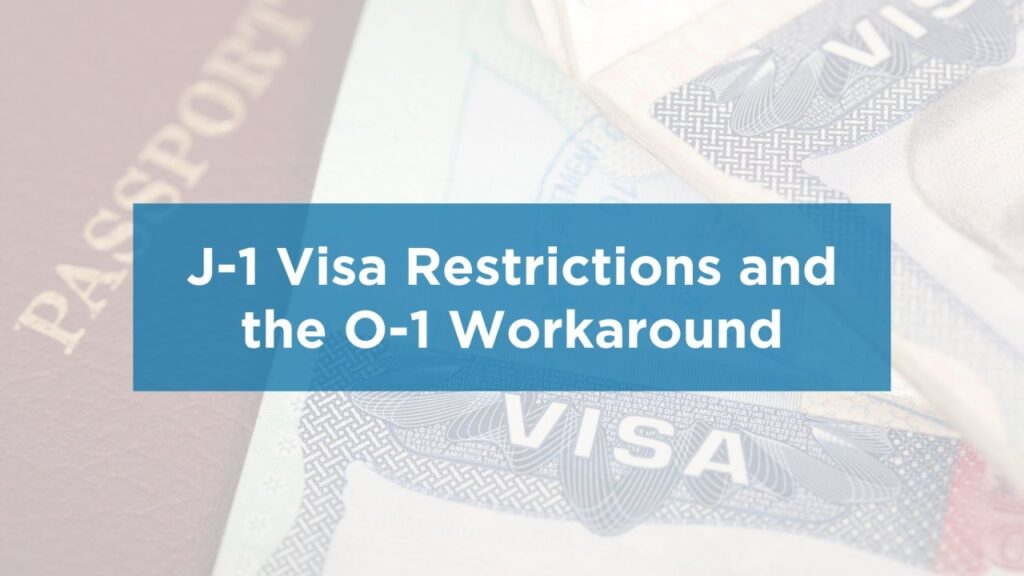
Many foreign nationals who come to the U.S. under a J-1 Exchange Visitor visa find themselves caught in a unique legal bind: the two-year home residency requirement, also known as Section 212(e) of the Immigration and Nationality Act (INA). This rule can limit access to certain immigration benefits and delay future U.S. immigration plans.
At VKM Law Group, our team regularly works with individuals navigating the complexities of J-1 visa restrictions. In this article, we’ll explain what the home residency requirement restricts — and how options like the O-1 visa can offer a powerful legal workaround.
Understanding Section 212(e): The Two-Year Home Residency Rule
The two-year home residency requirement applies to certain J-1 visa holders who:
- Receive funding from their home government or the U.S. government,
- Are engaged in fields listed on their home country’s “skills list,” or
- Participate in graduate medical education or training.
If subject to Section 212(e), you must return to your home country for a total of two years before you become eligible for several key U.S. immigration benefits.
What Does Section 212(e) Restrict?
If you’re subject to this rule, you cannot:
- Apply for H visas (like H-1B for specialty occupations),
- Apply for L visas (for intracompany transferees),
- Apply for K visas (for fiancé(e)s of U.S. citizens),
- Adjust your status to lawful permanent resident (green card holder).
This means your ability to stay and work in the U.S. — or transition to another visa status — may be significantly delayed, unless the two-year requirement is either fulfilled or officially waived.
The O-1 Visa: A Strategic Exception to Section 212(e)
If you’re subject to the J-1 home residency rule but have extraordinary abilities, the O-1 visa could offer a valuable solution.
What Is the O-1 Visa?
The O-1 visa is a nonimmigrant work visa for individuals with demonstrated expertise in:
- Science,
- Education,
- Arts,
- Business,
- Athletics.
Unlike the H-1B or L-1, the O-1 visa is not restricted by the 212(e) rule. This means that even if you’re required to return to your home country under J-1 rules, you can still legally apply for and work in the U.S. under O-1 status without fulfilling the two-year residency or obtaining a waiver first.
How the O-1 Visa Works as a Bridge
While not a direct path to a green card, the O-1 visa offers:
- Legal work authorization in the U.S.
- Multiple extensions (initial stay of up to 3 years, with 1-year extensions)
- A platform to build strong credentials for future immigration filings
- An opportunity to apply for permanent residency via EB-1 or NIW, once the two-year requirement is fulfilled or waived